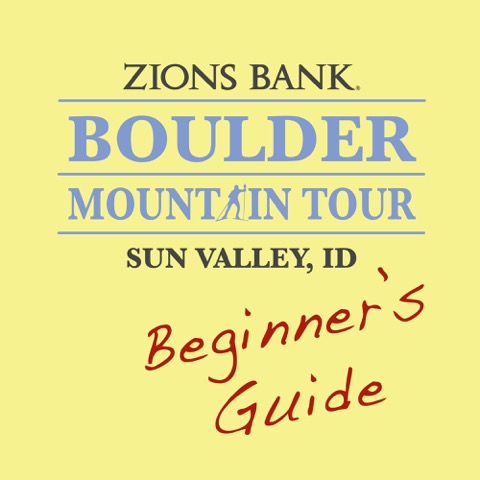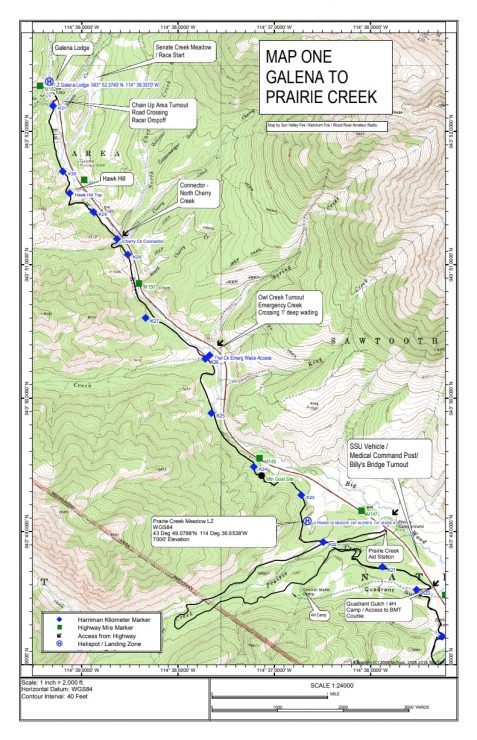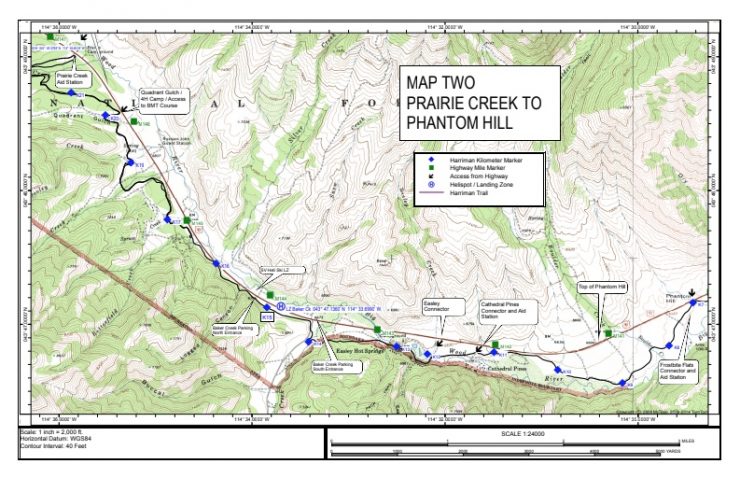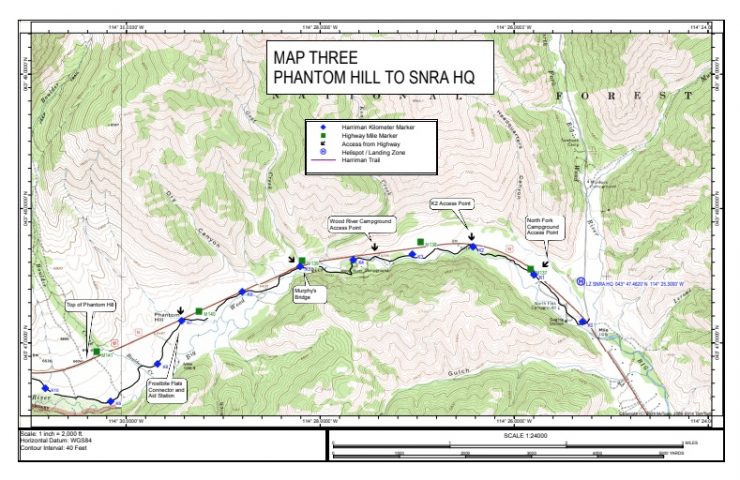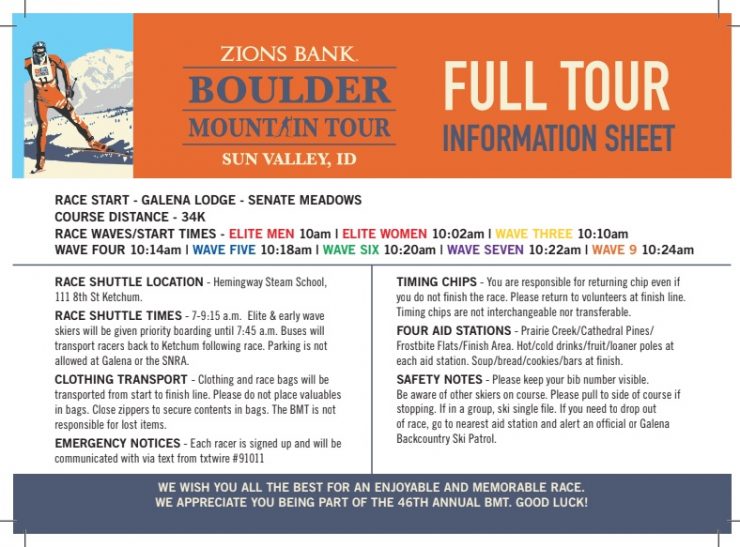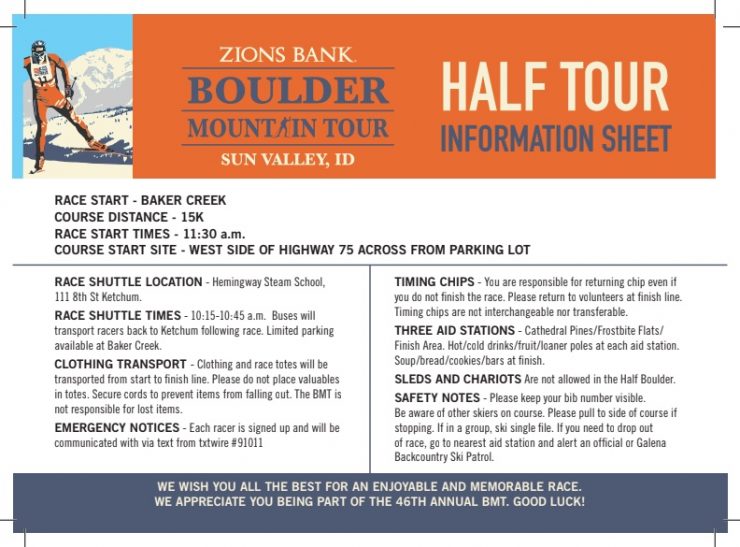Sponsored Content
A certain amount of pre-race nerves can be beneficial. A sharpened central nervous system can rev the body for a 34-kilometer skate race. But the jitters can distract. There’s the possibility of low-quality sleep. Time wasted on variables out of your control, or, perhaps, beyond your budgetary control — cross-country ski racing can get pricey fast.
In this guide, catering to BMT neophytes, we attempt to take the edge off and foster fun in your race day experience.
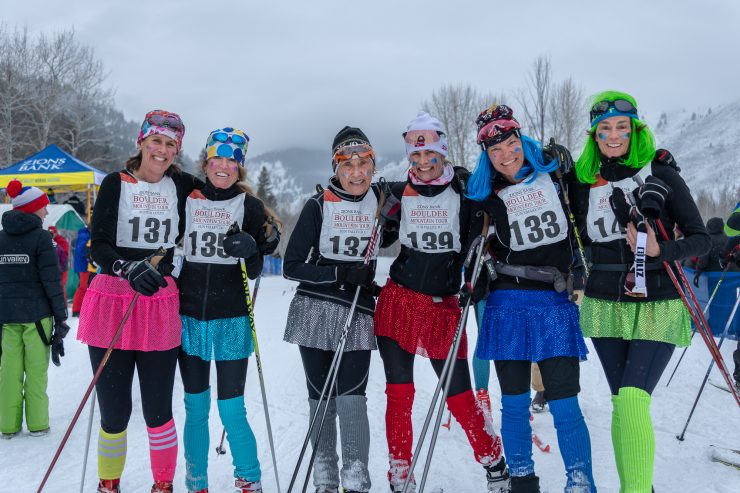
For starters, the BMT is considered a skate race. But really, if you are new to skating and want to classic ski instead, you can do that. The BMT groomers set a single classic track for all 34 k. You are welcome to stride this event. You’ll just be categorized as a skater – no classic specific division here. The BMT also welcomes adaptive athletes. That goes for the full 34 k version or the Half Boulder 15 k.
In our attempt to render a many-moving-parts race down to a few key items, here are the basic rules.
Rule Number One: The Altitude
The race begins at Galena Lodge sitting at 7,400 feet in elevation. For denizens of Leadville, Colorado (think 10,150 feet), or any other high mountain locale, 7,400 feet may not elicit even a small gasp. That said, err on the side of caution if you are heading to Sun Valley from a lower altitude.
We are not so much concerned with altitude sickness as we are with potentially red-lining the engine out of the starting gates.
Up at Galena, there’s no massive hill to climb. However, a short climb near the start could present problems. Skiers reach the hill shortly before linking up with the Harriman trail — that’s the main trail artery racers take to the finish line. Rev too much out the gate, and you risk pushing yourself into leg-burn territory. And without proper acclimatization, you’ll bump beyond the redline sooner than you would at lower elevations.
How should you acclimatize? One idea is to arrive three days before the race goes down on Saturday, Feb. 1. Three nights in Sun Valley affords an athlete ample time to adjust to lower oxygen concentrations. We are not talking Everest here. But fun is fun and no one wants to be gasping.
On the other hand, you could try to “beat” the altitude. Arrive Friday, race Saturday, and cross fingers. Either way, don’t start the race too hot. Build into it.
Rule Two: Stay Warm
Subzero is not how you want to feel. “Don’t get to the start so early you are a Popsicle when you start,” Morgan Arritola, former speedy skier (U.S. Ski Team member and former Sun Valley local), said. “Wear a ton of clothes and leave them. You will get them back. Use hand warmers, toe warmers, etc. if need be. Cold muscles just don’t work well so give yourself every opportunity to have a great race.”
Like any other place in the Rockies, it can get cold. If the weather forecast predicts winds and an Arctic chill, plan ahead. Invest in a good wind-proof base layer — top and bottom if it looks brrrrr cold. If you have not already taken the plunge, buy a pair of wind briefs. These can be priceless. Enough said.
Rule Two: Stay Ahead with Nutrition
Arritola reminds folks to carry their own sports drink and fuel. The organizers provide three aid stations with liquid and solid nutrition. But Arritola wisely notes that self-sufficiency affords new racers unfamiliar with how their body might respond to an on-snow race effort the luxury of having fuel whenever they might need it. Sometimes aid stations can be busy. If you are feeling spry and want to keep the pace up, you’ll have food handy if you ski on by.
Rule Three: Break Down the Course into Three Distinct Parts (See Course Topo Map)
It seems every discipline likes a tidy construct of breaking things into threes. The BMT course is no different. The rule of thirds, in this case, applies to three distinct parts of the course. (On the course maps, K 30, for example, means 30 kilometers remaining to the finish.)
Galena to Prairie Creek
This section takes skiers from the start to the Prairie Creek aid station. Here, at the aid station, if you are racing the full BMT, you’ll have 22 k to go.
Back to the start at Galena. We’ve already mentioned this, but it’s worth hearing again: don’t start too hot. There’s something else to keep in mind, as this is a mass start event (although skiers are seeded in waves). Stay chill. Stay upright. Keep poles, skis, and the body intact.
“The start can be chaos. Expect it. Don’t let people skiing in close proximity get you in a panic,” advises Arritola. “I would ‘shorten’ my technique to make sure your poles don’t get stepped on or broken, or your skis skied over. You want to stay upright. Think of it like a game of Frogger and be ready to react.”
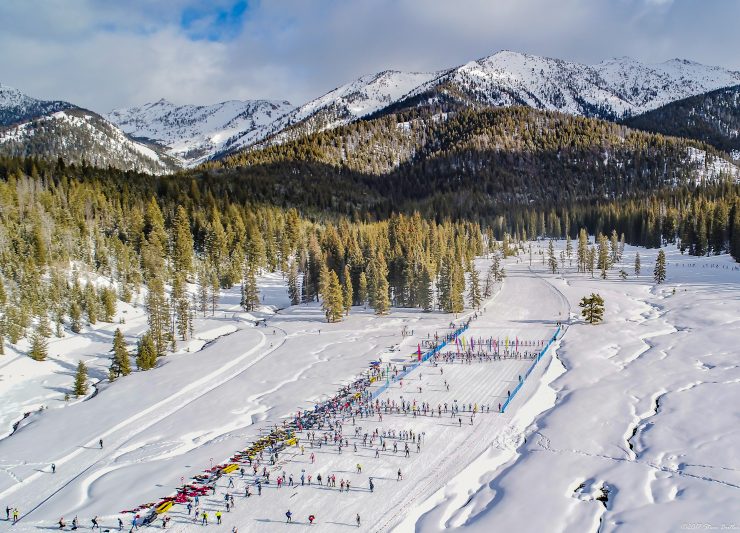
Another BMT veteran and retired professional cross-country skier who resides in Sun Valley, Matt Gelso, said skiers about to merge onto the Harriman trail, a few kilometers after the start, should remain aware. The stream of skiers must cross the main road heading up to Galena Pass. The makeshift road crossing can become sugary snow. First-timers should note that snow conditions across the road can feel less stable underfoot. Stay heads up, Gelso noted. The trail leading into the road crossing also pinches down. Skiers can become bottle-necked there. The wise thing to do when approaching the crossing is to check your speed and be aware of the scrum around you.
Post-road crossing, you’re skiing on the main Harriman trail. It’s still a long down valley stretch to the finish.
The next feature you can expect some action is Hawk Hill with 29.5 ks to go. This can be a punchy climb for many, meaning you’ll be transitioning from V2 to V1 — hill-climbing mode. Expect the mass of skiers around you to get backed up. Although not for too long. Hawk Hill is a few hundred meters in length, don’t freak out about being blocked and start wasting energy trying to move around the jam, it’s wise to stay calm and keep the pace sustainable.
Over the crest, as skiers gain speed, Arritola reminded us that exercising caution can be more efficient in the long-term. “If you have to slow down, it’s better to slow down early so you carry some speed out of the bottom of the hill.”
The feed station at Prairie Creek is the next heads-up area. Around 21.7 k remaining, skiers might bunch again in the run-up to the feed station. “There is nothing really technical but people panicking for feeds, poles flying all over, etc. can make it a challenge,” Arritola said.
Post-feed, some skiers can get caught off guard by the climb that begins after the Prairie Creek aid station. It’s nothing totally lung-busting, but it is a climb where Gelso said he’s seen many skiers fall off. That’s coming from someone who many times was the instigator. In other words, he’s done the dropping. So keep the pace tempered here.
Prairie to Phantom Hill
This section runs from roughly kilometer 21 to kilometer 7. Arritola calls this terrain “pretty casual.” Emerging skiers, those becoming proficient in riding a flat ski, will rely on V2 and V2 alternate here. “Try and relax and get into a rhythm,” advises Arritola.
The terrain begins to open up after at K 20. Think skiing through wide-open meadows, riparian zone shrubs, and snow-covered sage. With the widening of the valley and sparser tree cover comes exposure. Colder temperatures and steady headwinds are not uncommon. If the forecast calls for frigid air and a stiff breeze, this is where the wind briefs come into play. (Thank you BMT beginner’s guide.)
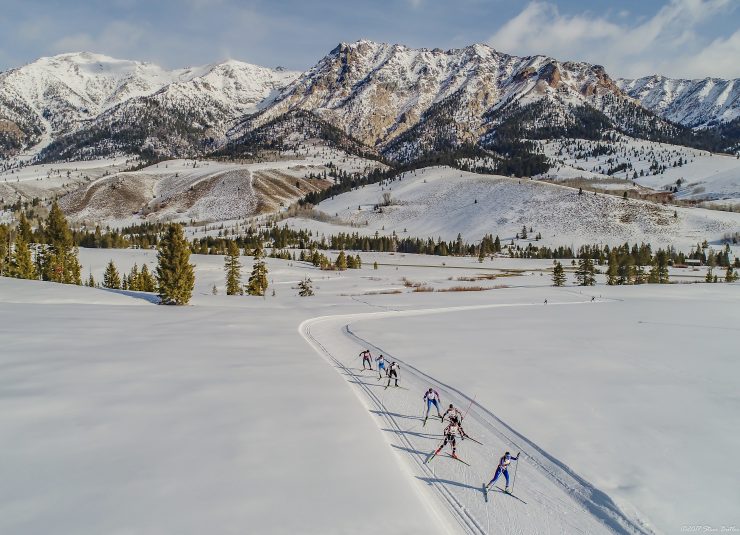
Another low-cost high-reward piece of clothing is the now ubiquitous Buff or neck-gaiter. Hard to believe that not such a long time ago, Buffs were odd-looking. Now they are part of the essential cross-country costume. The Buff comes in handy on this section as an extra insulating piece. In fact, on the course map, you’ll note an important landmark: Frostbite Flat around K 7. Be prepared. Stay warm.
Back to the course. At K 19, across from the Russian John Guard Station, skiers engage with another hill. Nothing too steep. But if you are in race mode, meaning you are fighting for places and are feeling good, “is it a spot where inattentive skiing will get you gapped,” Gelso explained. “It’s not really that people try to get gaps there, it just happens. It’s unassuming, but it bites people.”
There’s your fair warning for the terrain near K 19.
Phantom Hill to SNRA (The Finish)
“Again, this is a very gentle grade, mostly V2 and V2 alternate,” Arritola said. “If you can get in a group with a steady pace that can be a good way to save a little energy. This section can also be very, very cold along the river. It just depends on the year but sitting in behind people can help if it is cold. Otherwise, enjoy the ride home and cross the finish line with nothing left!”
Arritola brings up a great point. With the valley widening after K 14, it might be time to find a draft or a group to work with. Use others strategically in the event of a headwind. And, if you are feeling nimble and strong, why not take a chance and pull in front. But, and this is a big reminder, don’t pull for too long. The object is to have a good experience and come back for more with a BMT under your belt.
Before we forget, don’t be fooled by this common BMT axiom: “It’s a downhill course”. Those are foolish words to race and pace by.
Don’t get lulled into thinking gravity is your unabashed friend. Yes, this is a trending downhill race, as it loses 1,150 feet in elevation. It is a working course. Trending downhill does not mean you’ll be in a tuck or “resting” for any significant amount of time.
This is a 34 k race at altitude.
Which is a reminder of something else Gelso mentioned. If this is your first time at the BMT, or your first go at a long-range skate race and you are coming from another sport, say road cycling, where real-time race data like power and heart rate often dictate effort, ‘take your heart rate monitor off,” said Gelso.
If you are ready, it may be time to go hard. But it also might be time to hear the snow under your skis and to revel in the down valley spectacle that is the BMT.
Waxing and Skis
Skiing can be fickle. Good skis, good wax, bad skis, bad wax are things you’ll surely hear about as you bus up to Galena. Try to tune that out. Our advice: find a pair of skis you enjoy skiing on. A pair that remains stable underfoot in most conditions.
Cold snow is not uncommon in the Big Wood River Valley. Having a ski that glides in cold conditions can add to the fun factor. But if you don’t have a cold specific ski, wait a year, then maybe take the ski-quiver dive. Either way, prep your skis with a hard green wax, and then throw a mid-cold blue paraffin on top.
That’s basic, but it should get you from Galena to SNRA with a smile. Keep in mind though, cold cold snow is slow slow snow.
What if it calls for warm conditions, trending towards freezing or over? That’s where having a local shop buff your skis might pay dividends. This is not the beginner’s guide to really mine the depths of ski flex, wax, grinds, and structure. In fact, if you don’t know what these terms are yet — good on you. If you enjoy the BMT, you’ll be knee-deep in cross-country skiing nomenclature soon. Email us, we can send you in the right direction.
But, if it looks warm, the most basic thing is to add a violet paraffin wax to your bases. If you want to get more exotic, then it’s time for the experts. That will cost some coin, but some smiles have a price.
The BMT is also not a one pony event. The week-long run-up to the BMT is an amazing opportunity for the neophyte cross-country ski racer to go deep.
On January 25, the locals throw a benefit party to support the local trails.
Wednesday, January 29 features the NordicTown USA Sprints followed by a Kickoff Party and Sprint Awards. Trust us — you’ll love this.
Thursday January 30 is time for the SVSEF Gold Team Race Clinic. This is free to BMT participants, but priceless if you are looking for some technique cues.
Friday, January 31, Race Bag/Packet Pickup and BMT Expo
Saturday, February 1 — BMT race day.
Saturday, February 1 BMT Block Party and Awards Bash (Ketchum Town Square).
Sunday, February 2 Demo Day and Barbecue at the Sun Valley Nordic Center.
You can find a detailed Sun Valley Nordic Festival schedule here.
Basic Schedules for the Full and Half Boulder Mountain Tours

